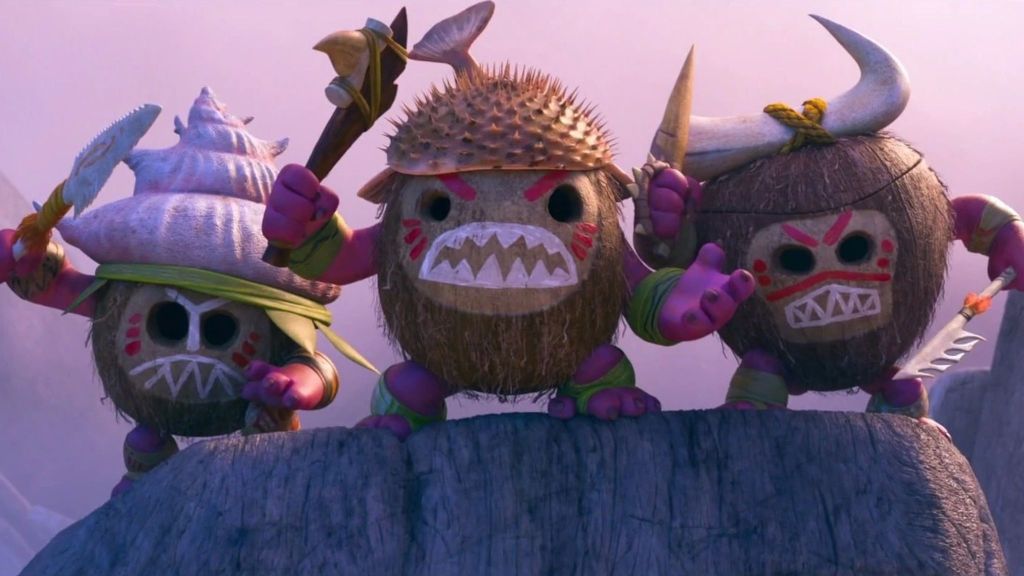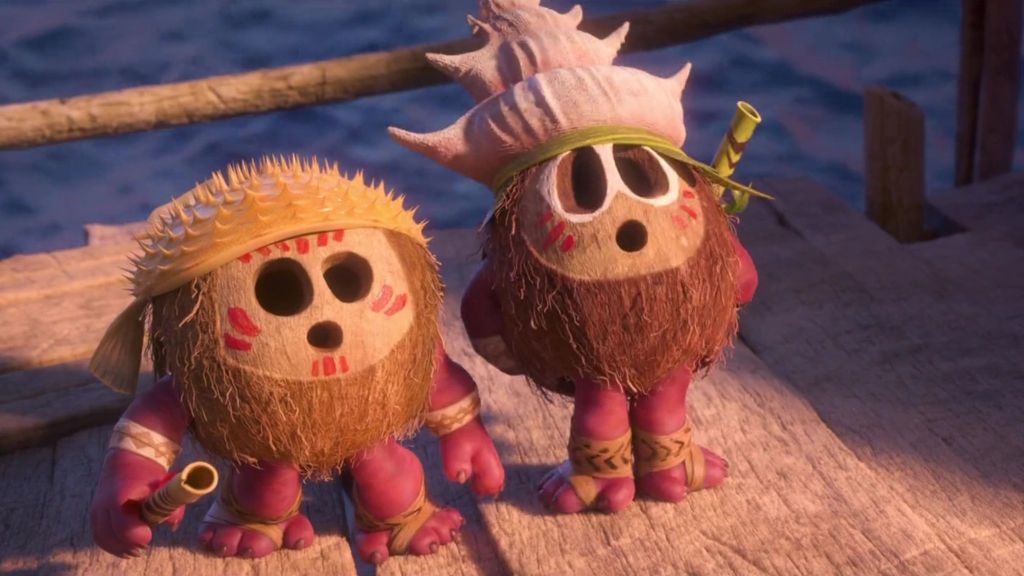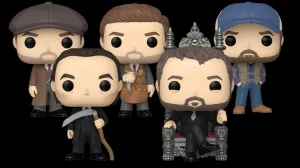Moana 2 brings back the Kakamora, coconut-cladded pirates who loom over the seas, using poisonous darts to paralyze their victims. In the first movie, these tiny villains had already faced Moana (voiced by Auli’i Cravalho) and Maui (voiced by Dwayne “The Rock” Johnson). However, in the sequel, the Kakamora get an expanded role, with one of their own joining the heroes in their journey to break the curse of a vengeful god. It’s great that these tiny pirates get more time to shine in the sequel, as the Kakamora success will lead more people to learn about the real-life legend that inspired the pirate bunch.
Videos by ComicBook.com
WARNING: MOANA 2 SPOILERS!
In Moana 2, we learn that many centuries ago, the storm god Nalo (voiced by Tofiga Fepulea’i) sunk the mythical island of Motufetu, from which the ocean’s currents depart. Without these water routes, human tribes were doomed to remain isolated, eventually being lost to history. The Kakamora were also affected by Nalo’s curse, as they were outside their island when Nalo ensnared the currents. Now, they are doomed to wander the seas without a home they can return to. That is until the Kakamora decide to help Moana retrieve Motofetu from the bottom of the ocean.
This change in the Kakamora representation, from trickster enemies to one of the peoples of the Pacific Island, reflects the real stories that inspired Disney to use the coconut warriors in Moana. That’s because the Kakamora is both a legendary creature and a forgotten race of short-statured humans.
The Ancient Tales of the Solomon Islands

The Kakamora legend originates in the Solomon Islands, particularly in Makira, Guadalcanal, and Malaita, where they were known by various names, including mumu, dodore, and kalibohibohi. These beings were described as small-statured humans, standing between one and a half feet and three feet tall, with distinctive features like long black hair and elongated fingernails.
Unlike Disney’s comedic interpretation, the traditional Kakamora were considered mysterious and potentially dangerous beings who inhabited caves and deep forest regions. They were known for their remarkable strength and survival skills, living without tools or fire and sustaining themselves on wild bush foods. Their reputation for becoming aggressive when cornered made them feared among local communities.
[Related: How Moana 2 Directly Calls Out Disney Princess Tropes]
The most detailed early documentation of the Kakamora comes from Reverend Charles Fox’s 1924 book The Threshold of the Pacific, in which he describes discovering evidence of their existence, including mysterious footprints and signs of their presence along riverbanks. Fox’s accounts suggested these beings were more than mere folklore, presenting them as an actual population living in parallel with the island’s inhabitants. While the Reverend’s finding holds little scientific relevance, there is some truth to the Kakamora myth, as small-statured humans existed many millennia ago.
Did the Kakamora Actually Exist?

In 2003, a groundbreaking discovery on Indonesia’s Flores Island revolutionized our understanding of human evolution when researchers uncovered the remains of an ancient human species standing only 3.5 feet tall. These miniature humans, scientifically named Homo floresiensis but affectionately nicknamed “Hobbits,” have sparked intense scientific debate about their origins and relationship to other human species.
The initial discovery included a nearly complete female skeleton, known as LB1, found in Liang Bua Cave. By 2015, scientists had recovered partial skeletons of 15 individuals, including one complete skull. The remains were dated between 100,000 and 60,000 years ago, suggesting these small-statured humans coexisted with modern humans who reached the region around 50,000 years ago.
More recent discoveries at the Mata Menge site have pushed back the timeline of these ancient humans. In 2024, researchers uncovered what they describe as the smallest adult human arm bone ever found in the fossil record, dated to approximately 700,000 years ago. This finding suggests that the ancestors of H. floresiensis may have been even smaller than their later descendants.
These humans differed from modern people not only in height. Their feet were relatively long for their body size, measuring 70% of their thigh bone length compared to modern humans’ 55%. Plus, they lacked the spring-like arch mechanism used in running, and their big toe was shorter than ours, suggesting a different, less efficient walking gait.
These discoveries connect directly with the Kakamora legends, suggesting that stories of these creatures in Pacific folklore might echo memories of actual ancient populations. From that perspective, the legend of the Kakamora could be the fruit of the slow distortion of factual history by millennia of oral tradition, a memory-preservation tool that still has a crucial place in Pacific Island culture.
Moana 2 is now playing in theaters.








